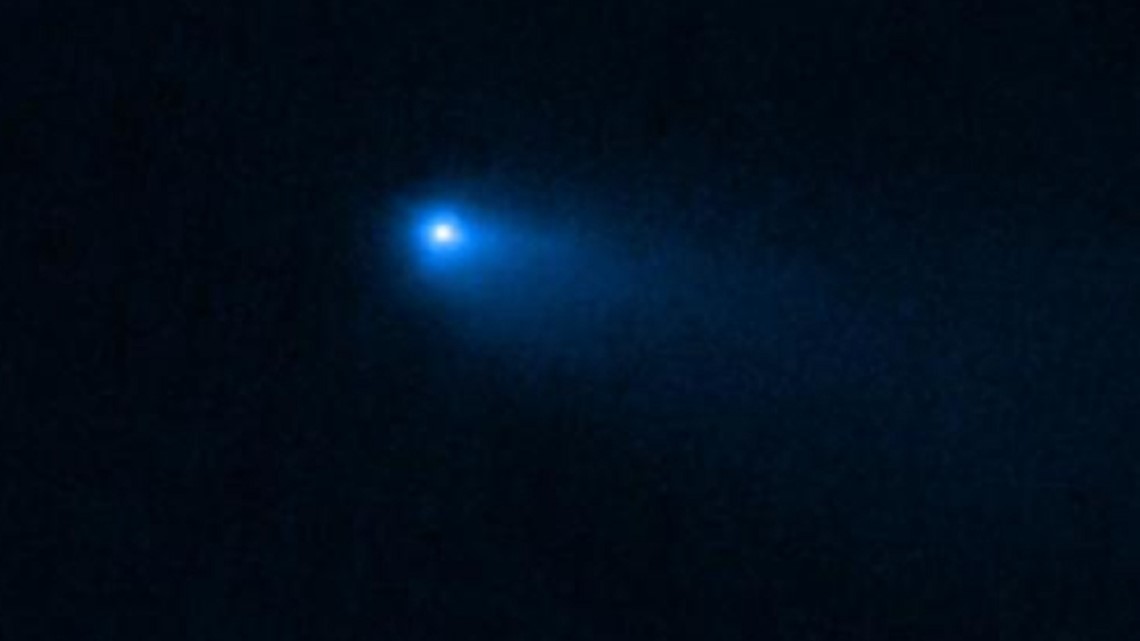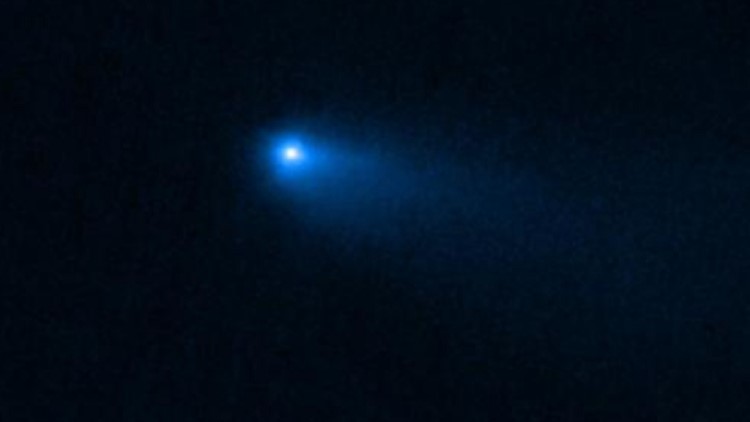NEW YORK — Researchers using the James Webb Space Telescope have spotted water around a rare comet, calling it a "long-sought scientific breakthrough." Their findings were published on Monday in Nature.
Astronomers found water vapor on Comet Read (Comet 238P), a comet located in the main asteroid belt between Jupiter and Mars. For the first time, water has been found on a main belt comet, proving to scientists that water from the solar system can be preserved as ice in that region, according to a NASA news release on the study.
Stefanie Milam, a Webb deputy project scientist for planetary science and a co-author on the study, said in a statement that understanding the history of water distribution in the solar system could help figure out other planetary systems – and whether they could be on their way to host an "Earth-like planet."
"Our water-soaked world, teeming with life and unique in the universe as far as we know, is something of a mystery – we're not sure how all this water got here," Milam said.
Previously, comets were understood to originate from the Kuiper Belt and Oort Cloud, which both sit beyond Neptune's orbit, and the distance away from the Sun would help preserve ice on the comets, NASA said. However, after much speculation, scientists using the Webb telescope were able to confirm water ice could be preserved in the warmer asteroid belt in the orbit of Jupiter.


However, astronomers made another "surprise" discovery with the comet – it had no detectable trace of carbon dioxide, NASA said. Carbon dioxide typically makes up 10% of the "volatile material" in a comet that gets easily vaporized by the sun's heat, the space agency added.
According to scientists, there's two possibilities explaining the lack of carbon dioxide.
One explanation: Comet Read had carbon dioxide when it formed, but lost it in warm temperatures, NASA said.
"Being in the asteroid belt for a long time could do it – carbon dioxide vaporizes more easily than water ice, and could percolate out over billions of years," astronomer and lead author of the study Michael Kelley said.
Another reason: Comet Read formed in a warm pocket of the solar system where no carbon dioxide was available, he said.
Scientists will now compare their research on Comet Read with other main belt comets.
"Now that Webb has confirmed there is water preserved as close as the asteroid belt, it would be fascinating to follow up on this discovery with a sample collection mission, and learn what else the main belt comets can tell us," Milam said.
The recent discovery of water around Comet Read adds to the Webb telescope's extensive list of findings. Last month, NASA released images captured by the telescope that show two spiral galaxies in the process of merging 250 million light-years away. The telescope first launched on Christmas Day in 2021 and is on a mission to find light from the first stars and galaxies.


